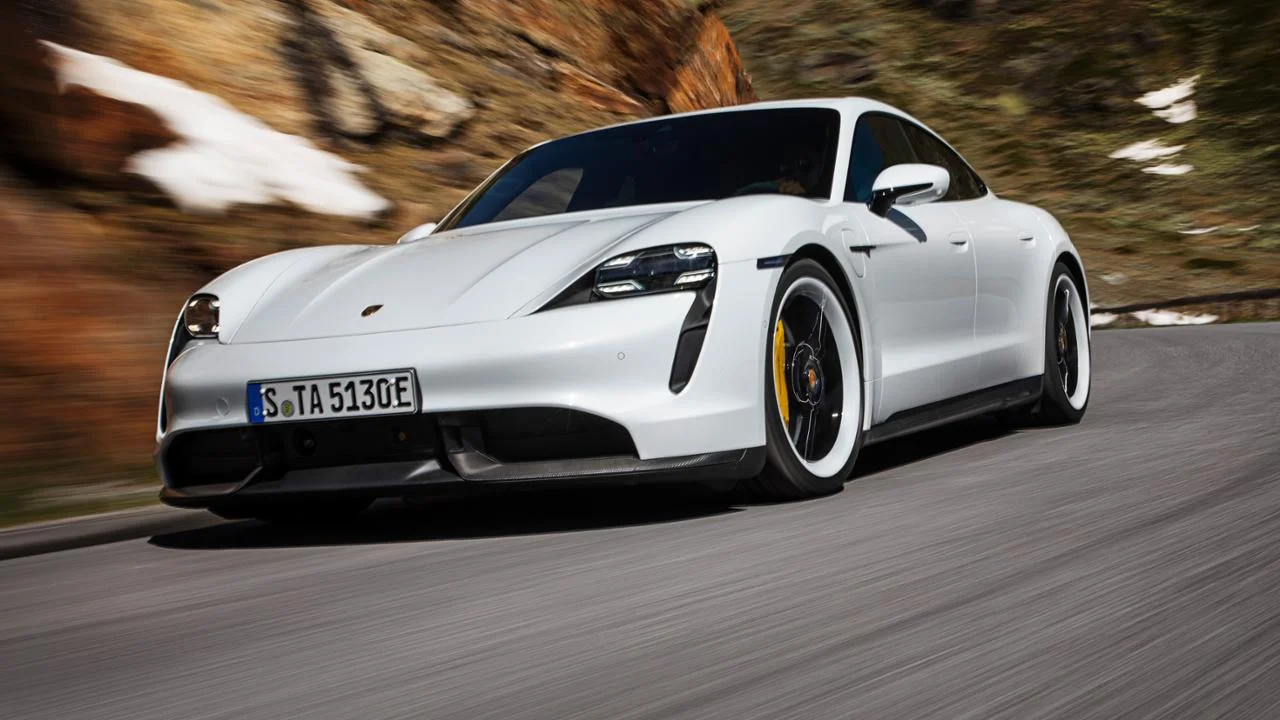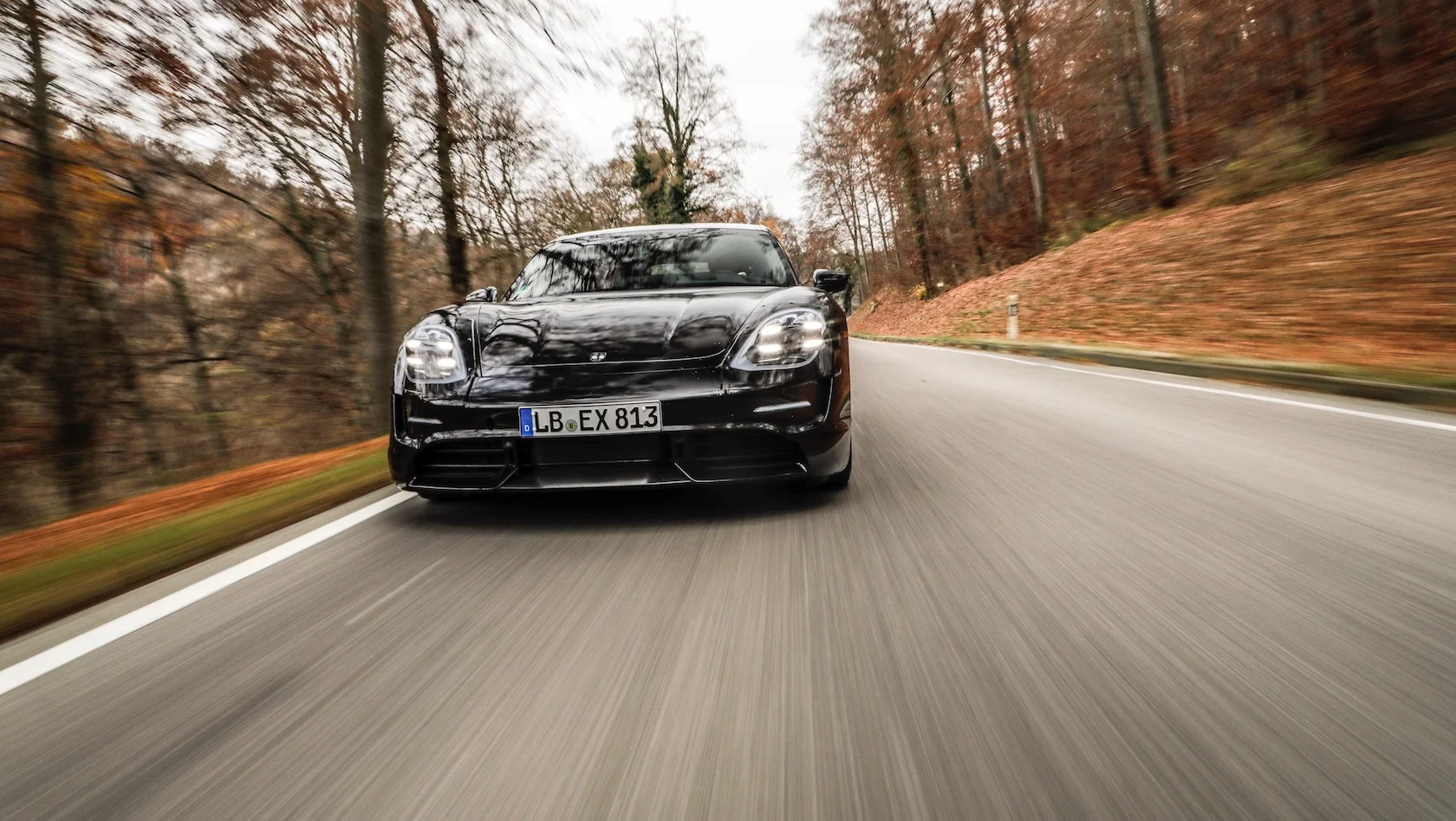Porsche Taycan Turbo versus Turbo S
Image: Porsche
Porsche has finally revealed some basic technical information about the first production Taycan models, the Turbo and Turbo S. Of course these pure electric vehicles don’t have turbochargers but for a while now we’ve been in an era in which “turbo” just means “fast,” so let’s move on from that and consider the cars rather than the names.
The most obvious difference between the Turbo and Turbo S is in the power output of the motors. Both models are rated at 460 kW (625 PS) continuous output but vary when used for launches. Here, the Turbo outputs 500 kW (680 PS) but the Turbo S increases that to 560 kW (761 PS), a 12 percent improvement.
This power is put to the ground through differently sized tires. The Turbo uses 245/45 R20 (Front) and 285/40 R20 (Rear). The Turbo S has bigger wheels and increases the width: 265/35 ZR21 (Front), 305/30 ZR21 (Rear).
The Turbo S masses slightly less than the Turbo going from 2305 to 2295 kg, a difference of just 10 kg.
Less mass, more launch power, and bigger rubber yields improved acceleration. The Turbo does 0-60 mi/hr in 3.0 seconds, the Turbo S improves that to a very, very quick 2.6 seconds. Porsche was being modest when they would previously only admit to 3.5 seconds or faster.
The Turbo S rides slightly lower, 3 mm, but the bigger tires contribute to drag. The coefficient of drag goes from 0.22 in the Turbo, slightly better than a Tesla S, to 0.25 in the Turbo S. With the same frontal area (2.33 m^2) the effective areas are 0.512 and 0.583 m^2 for the Turbo and Turbo S respectively. This appears to be reflected in the fairly close 0-200 km/hr times of 10.6 seconds and 10.8 seconds for the Turbo and Turbo S.
This increased aerodynamic drag (and rolling resistance) result in the Turbo S having slightly less range: 412 km (WLTP Max) for the Turbo S versus 450 km (WLTP Max) for the Turbo.
Rear wheel steering, or “Rear Axle Steering” as Porsche calls it, is standard on the Turbo S but optional on the Turbo. With it, turning circle diameter shrinks from 11.7 to 11.2 m.
To keep all this under control the brakes on the Turbo are Porsche Surface Coated Brake (PSCB) disks with 415 mm rotors (Front), 365 mm (Rear). The Turbo S gets the full carbon ceramic package as standard, 420 mm (Front), 410 mm (Rear).
In short the Turbo S is going to give you a somewhat more dynamic driving experience but choose wisely, you’ll pay with a 9 percent reduction in range. You’ll also pay in money, the Taycan Turbo starts at US$150,900 but the Turbo S will set you back at least US$185,000, a difference of over US$34,000.


